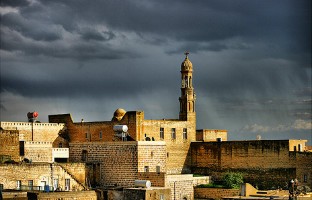Mideast Christian fear
A century ago, a wide-ranging Catholic Encyclopedia tried to give believers an alternative to secular reference works like the Encyclopædia Britannica. Now available online, the Catholic work offers wonderful browsing for anyone interested in Christian history or theology. But reading some of the entries on the Middle East is heartbreaking.
As recently as the start of the last century, Middle East cities celebrated since patristic times could be listed as thriving Christian centers. Denominational loyalties and hierarchies—that of the Greek Orthodox and the Melkites, the Assyrians, Jacobites and Armenians, the Catholics and even the Protestant missionaries—were lovingly described in the Encyclopedia. Such accounts make for poignant reading now, when we know that many of these Christian communities were slaughtered or uprooted in the extraordinary violence of the decade after 1915. A million Armenians and Assyrians perished, and millions more Greeks were expelled from what became the nation of Turkey.
The religious cleansing did not sweep the whole region. Christians survived in strength in Egypt, Syria, Palestine and Iraq. But the other communities could never forget the years of massacre, which profoundly shaped their later actions. In fact, we cannot understand the modern history of the Middle East without acknowledging those distinctively Christian politics. When we look at the recent upsurges in Syria, Egypt and elsewhere, we repeatedly hear the distant echoes of the bloody events that occurred during and immediately after the First World War.





